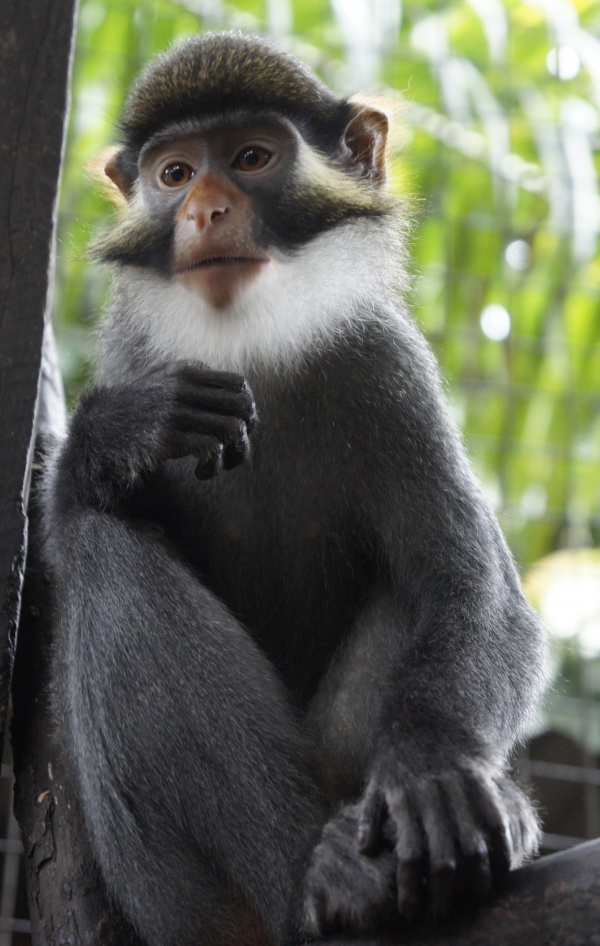Facts About Red-eared guenon
The red-eared guenon, also known as the red-eared monkey or russet-eared guenon, is a captivating primate from the family Cercopithecidae. These vibrant monkeys are found in Cameroon, Equatorial Guinea, and Nigeria, primarily inhabiting subtropical or tropical moist lowland forests. Regrettably, they face numerous threats, including habitat destruction, illegal hunting for bushmeat, and the pet trade.
These monkeys are especially striking due to their distinctive facial features. They sport blue fur around their eyes, a brick-red nose and ears, and yellow cheeks. Their lustrous fur is a mix of banded brown and pale hairs, with grey limbs and a long, red tail. Unlike other guenons known for their loud calls, the red-eared guenon is characterized by its quiet trill. Males are typically larger than females, with males averaging about 420 mm in head and body length, while females average around 384 mm.
There are two recognized subspecies of the red-eared guenon: the Cameroon Red-eared Monkey, found from southeastern Nigeria to southwestern Cameroon, and the Bioko Red-eared Monkey, native to Bioko Island in Equatorial Guinea. These monkeys prefer primary and secondary lowland tropical and sub-montane moist forests and sometimes reside near human settlements.
Red-eared guenons are omnivorous, consuming a diet of fruit, leaves, shoots, and insects. They live in groups led by an adult male, typically consisting of around ten females and their young. These groups are territorial but usually avoid conflicts with other groups. While their breeding habits aren't well-documented, it is known that related species give birth to a single infant every one to three years after a five to six-month gestation period.
One of the most significant threats to the red-eared guenon is deforestation, compounded by the bushmeat trade, especially on Bioko Island where they frequently appear in markets. It is estimated that around 3,400 red-eared guenons are hunted annually in the Cross-Sanaga-Bioko coastal forests for bushmeat, posing a substantial risk to their survival.

 Republic of the Congo
Republic of the Congo